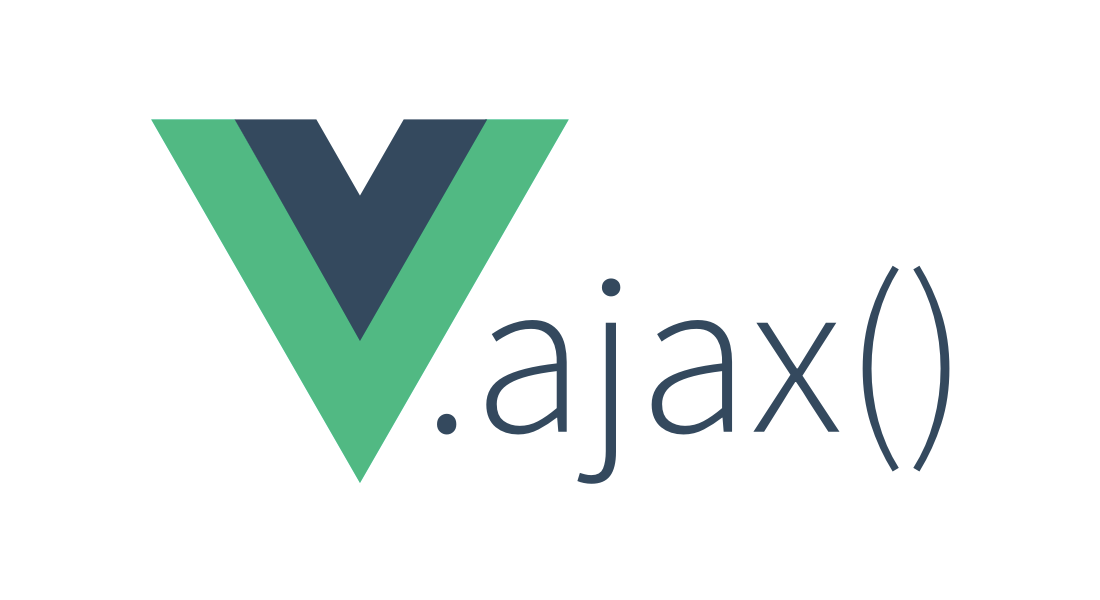
A light XHR plugin for Vue 2.x and and above versions. It has many similar features with jQuery's ajax() and Angular's $http(). In addition to these, it also has its own important features:
AssetsDynamic & async Vue components: (componentShifter)File uploadingHistoryTitlePreventing dublicate requests
Setup
npm install vue-ajax-plugin --save
You have two ways to setup vue-ajax-plugin:
CommonJS (Webpack/Browserify)
- ES6
Vue- ES5
var ajax = VueExample
VueajaxIf you want to send data to the backend:
VueajaxMethods & Requests
Get Method
Vueajax Arguments
url: string
A string containing the URL to which the request is sent.
data: object|null
A plain object that is sent to the server with the request.
configurations: object|null
A set of key/value pairs that configure the Vue.ajax request.
Other methods and requests are the same:
Post Method
Vue.ajax.post(string url[, object data] [,object configurations])
.then(function success[, function error])
Delete Method
Vue.ajax.delete(string url[, object data] [,object configurations])
.then(function success[, function error])
Head Method
Vue.ajax.head(string url[, object data] [,object configurations])
.then(function success[, function error])
Jsonp Request
Vue.ajax.jsonp(string url[, object data] [,object configurations])
.then(function success[, function error])
Patch Method
Vue.ajax.patch(string url[, object data] [,object configurations])
.then(function success[, function error])
Put Method
Vue.ajax.put(string url[, object data] [,object configurations])
.then(function success[, function error])
All of the above methods are a shortcut method of the Vue.ajax():
VueResponse Handling:
Success and error together in then() method:
Vue.ajax(object configurations)
.then(function success[, function error])
Success and error together in in separate methods:
Vue.ajax(object configurations)
.then(function success)
.catch(function error)
Component Shifter
With componentShifter() you can load (with Vue.ajax) and render your Vue template (html) in your application by dynamic & async Vue.component(). You can also add components and run them nested.
It also supports Vue.ajax's history feature. And the component is automatically update when navigating to the previous - next page.
vm.componentShifter(object configurations[, function success] [,function error])
- configurations: Object
Vue.ajaxconfigurations. For detailed information, see.
Required properties:- is: (String) Component name
- url: (String) Request url
- success: function
Your custom callback on success. - error: function
Your custom callback on error.
Example
index.html
Link <!-- Your container component --> app.js
var vm = el: '#classest' { return myPage: null // Component name pageLoaded: false } methods: { // Calling componentShifter this; } { if!pageLoaded this };Vue Ajax Configurations
Assets
Assets setting is used to push new asset files (CSS or JS) in the document. Available values, string or object.
Pushing single asset file
Vueajax;Pushing multiple asset files
Vueajax;Asynchronous
Asynchronous setting should be boolean. Default is true.
Vueajax;Cache
Cache setting should be boolean. Default value is false.
Vueajax;Complete Event
Complete event setting should be function.
Vueajax;CSRF
CSRF setting should be boolean. Default value is true. However, in the html head tag it must be csrf-token meta. Like this:
Vueajax;Data
Data setting should be object.
Vue;File Uploading
File uploading setting should be DOM object. We recommend using the post method when uploading files. The important thing here is that you should not forget the name attribute.
Vueajax;You can only add the accept attribute to send images.
You can add the multiple attribute to send multiple files with an input element:
History
History setting is usage of PushState (HTML history API). History setting should be boolean. Default value is false.
PushState (changing the URL of the page without refreshing the page) to create a faster browsing experience. This means less elements to load and therefore faster browsing.
Vueajax;Adding version for history
Layouts can be forced to do a hard reload when assets or html changes. First set the initial layout version in your header with a custom meta tag.
HTTP Headers
HTTP headers setting should be object.
Vueajax;Method
URL data setting should be string. Available values are:
deletegetheadjsonppatchpostput
Vue;Instead, you might prefer to use the following shorthand:
Vueajax;Preventing Dublicate
This setting prevents sending dublicate requests to the same address or given key data.
Preventing dublicate setting should be boolean. Default value is true.
The following example prevents sending requests over the same URL:
Vueajax;The following example prevents sending requests over the same given key data:
Vueajax;Scroll Top
scrollTop setting is used to scroll to top of the document when loading the request. Default value is false.
Vueajax;Timeout
Timeout setting should be numeric. Default value is 60000 (60 seconds).
(Time in milliseconds)
Vueajax;Title
Title setting is used to change the document title value. It should be string.
Vueajax;URL Data
URL data setting should be object. With this setting, you can add serialized query string to the URL you are sending.
Vueajax;The URL will be like this when sending the request:
http://example.com?page=15&category=Accessories
With Credentials
With credentials setting should be boolean. Default value is false.
There is a detailed explanation here.
Vueajax;Response Handling
The response returns the object on the frontend. The object in general is the following structure:
data: object|null status: string statusText: string headers: string config: object xhrStatus: string request: objectResponse Format
If the content type on the server is "application/json", the response.data is automatically converted to a JSON object. If the content type is anything else, the result is returned as plain text.
PHP:
header('Content-type: application/json; charset=utf-8');echo json_encode($array);Laravel:
Route::get('respone', function () { return response(json_encode($array), 200) ->header('Content-Type', 'application/json; charset=utf-8');});VueJS
Vueajax ;Error Handling
In then() method
Vueajax ; // "Error: Not Found"In catch() method
Vueajax ; // "Error: Not Found"License
Copyright (c) 2018 Fatih Koca